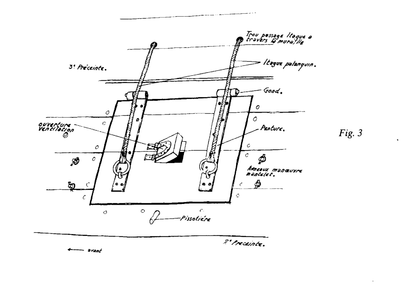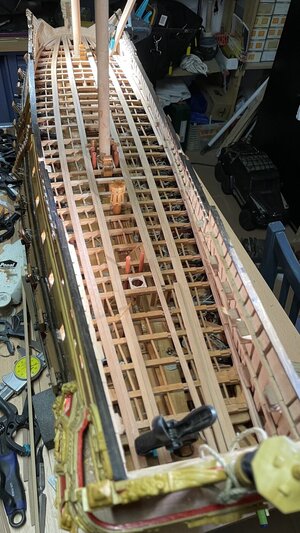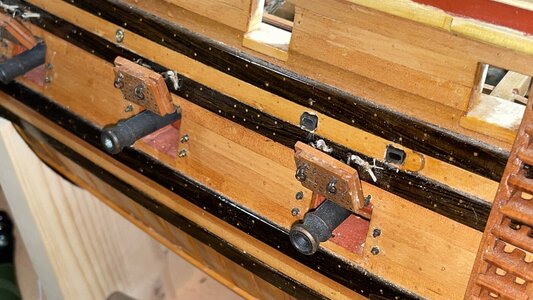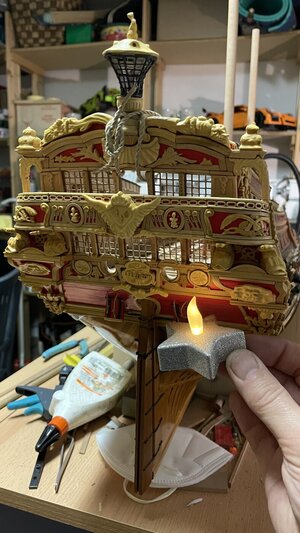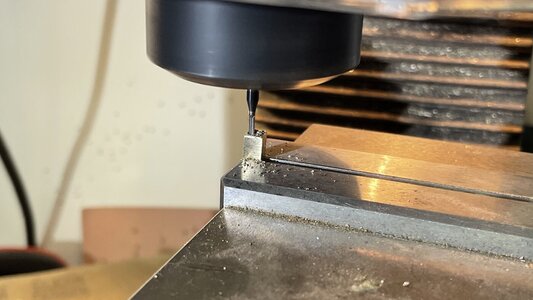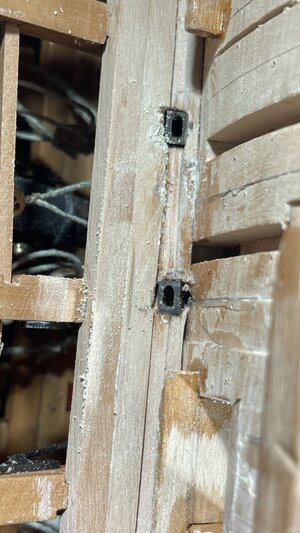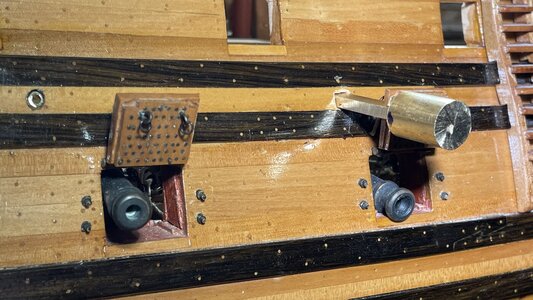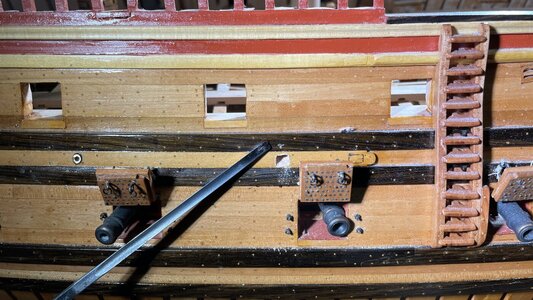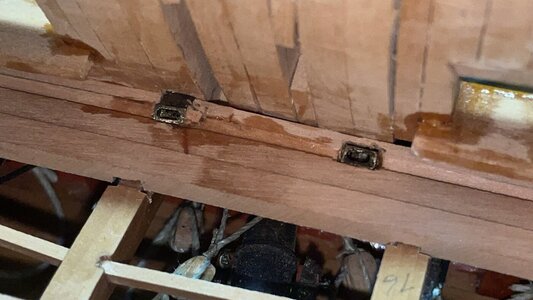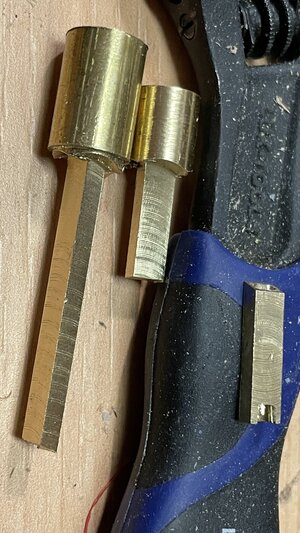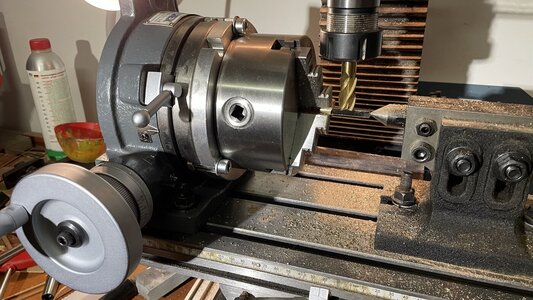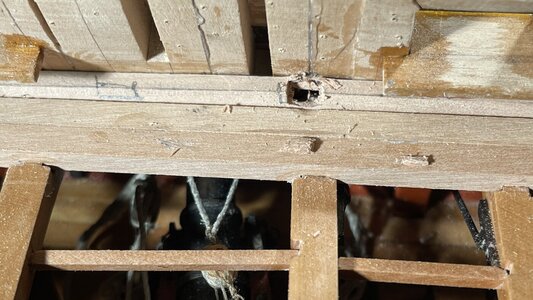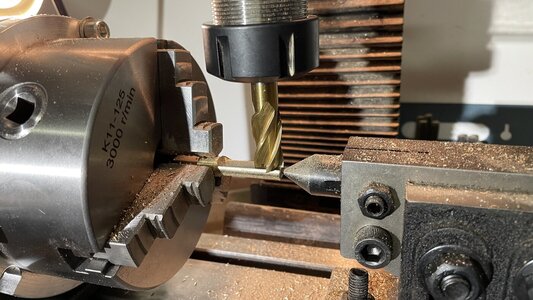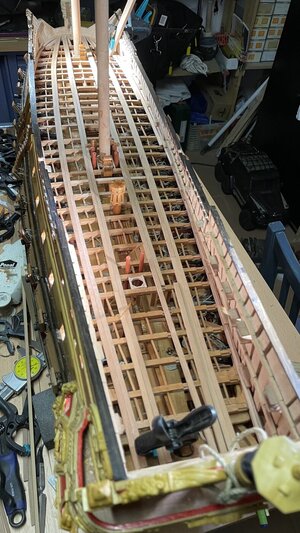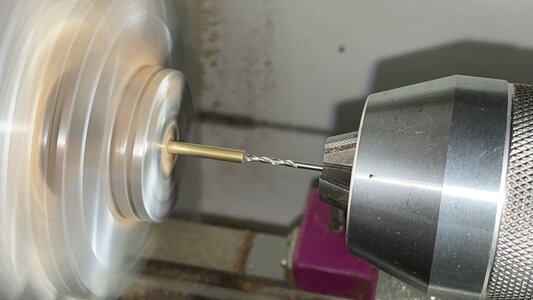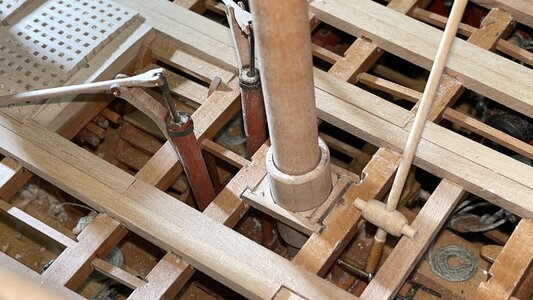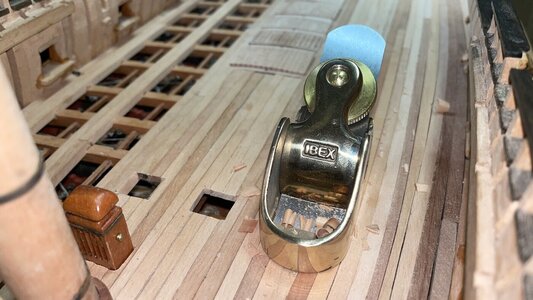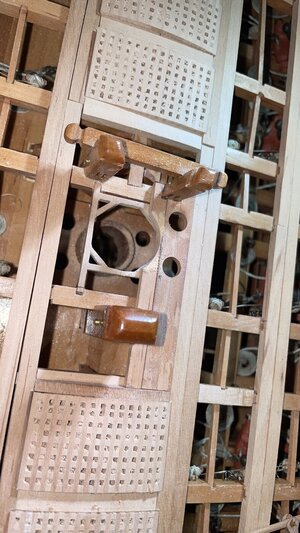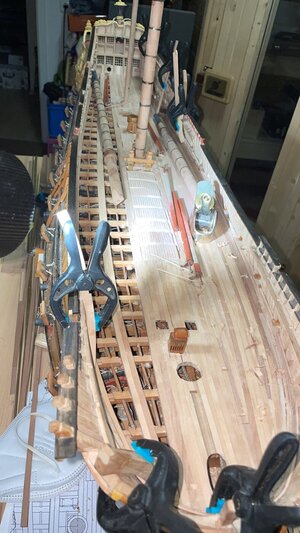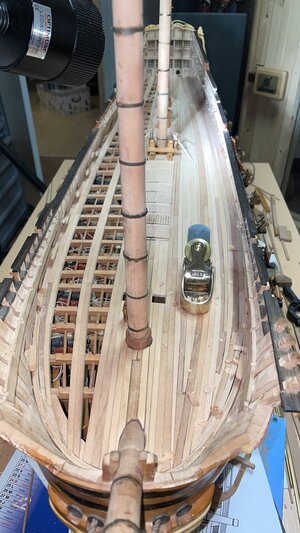-

Win a Free Custom Engraved Brass Coin!!!
As a way to introduce our brass coins to the community, we will raffle off a free coin during the month of August. Follow link ABOVE for instructions for entering.
-

PRE-ORDER SHIPS IN SCALE TODAY!
The beloved Ships in Scale Magazine is back and charting a new course for 2026!
Discover new skills, new techniques, and new inspirations in every issue.
NOTE THAT OUR FIRST ISSUE WILL BE JAN/FEB 2026
You are using an out of date browser. It may not display this or other websites correctly.
You should upgrade or use an alternative browser.
You should upgrade or use an alternative browser.
french 64-gunner LE FLEURON in scale 1:48 by Joachim
- Thread starter Uwek
- Start date
- Watchers 68
-
- Tags
- ancre le fleuron
This is really a very good progress -> 
I would like to see once your model in real - Is there any chance, that you may also come to Augsburg next March?
Would be great

I would like to see once your model in real - Is there any chance, that you may also come to Augsburg next March?
Would be great
Ein Supermodelo-el capiThe first canon deck is finished
View attachment 270866View attachment 270867View attachment 270868View attachment 270869View attachment 270870View attachment 270871View attachment 270872View attachment 270873View attachment 270874View attachment 270875View attachment 270876View attachment 270877View attachment 270878View attachment 270879View attachment 270880View attachment 270881View attachment 270882View attachment 270883View attachment 270884View attachment 270885
- Joined
- Oct 31, 2019
- Messages
- 229
- Points
- 298

At the bow I put a U-shaped beam at the weekend, which stabilizes the bow and all the deck beams. It was quite labor-intensive to grind the exact shape of the beam. First I created a paper template, then glued it to a wooden board and sawed out the beam. Then a lot of fine-tuning was necessary until it fit in horizontally.
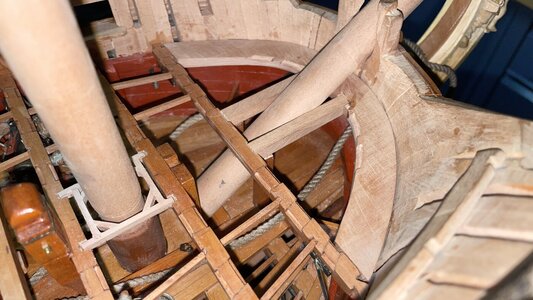

Last edited by a moderator:
- Joined
- Oct 31, 2019
- Messages
- 229
- Points
- 298

That depends on CovidThis is really a very good progress ->
I would like to see once your model in real - Is there any chance, that you may also come to Augsburg next March?
Would be great
So - Super - I interpret your words with a principle Yes ...... Would be greatThat depends on Covid
- Joined
- Oct 31, 2019
- Messages
- 229
- Points
- 298

Wie ich forehere fruher gesagt haben.Ein Supermodelo-el capi. es ist in the classe der hr KALIBOOT.That depends on Covid
WILKOMMEN IN DER Covid krise. Gestren hatte ich 2 PRC TEST GEMACT -ALLE - NEGATIVI -UND VOLL GESPRITZ
Und ich wunche alles ein schones weinact .
Attachments
- Joined
- Apr 20, 2020
- Messages
- 6,202
- Points
- 738

looks beautifulHappy Christmas to all and some new photos of the water drainage
merry Christmas to you and your family
- Joined
- Oct 31, 2019
- Messages
- 229
- Points
- 298

In order to be able to close the 2nd cannon deck on the port side and in the middle of the deck, the lower masts must sit properly straight. Same for the pumps and other machines, other accessories that go through multiple decks. Therefore, I properly shaped the lower mast trees on the lathe: The tapering upwards is achieved by turning many individual cones on the lathe. The square sections were created on the milling machine. Then I built the mechanism of the pumps with lever, pump rod, etc.
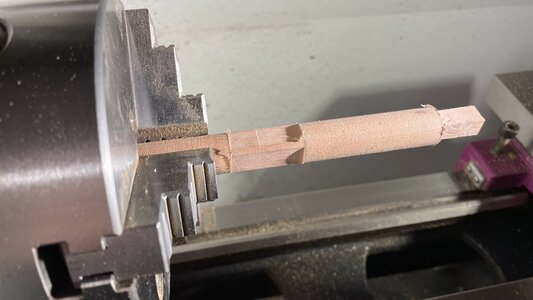
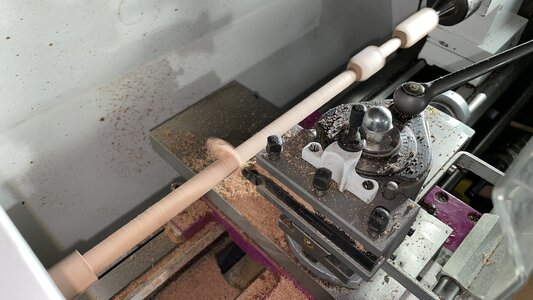
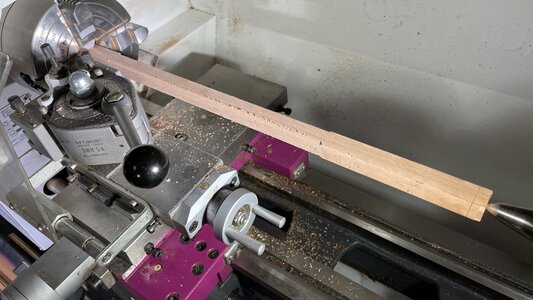
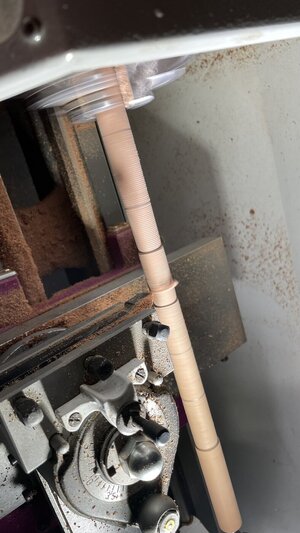
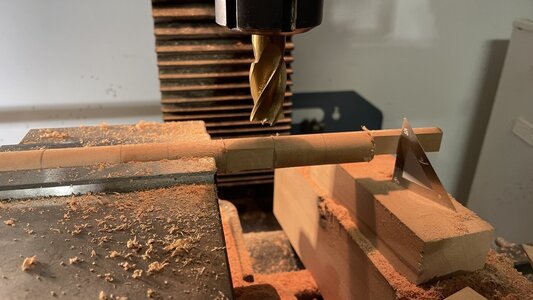
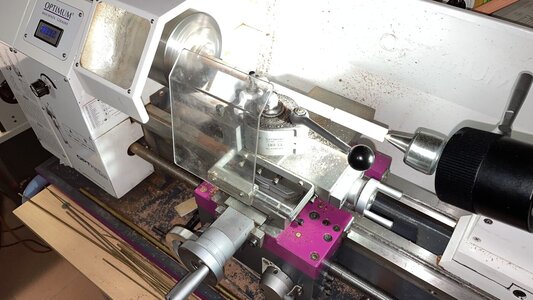
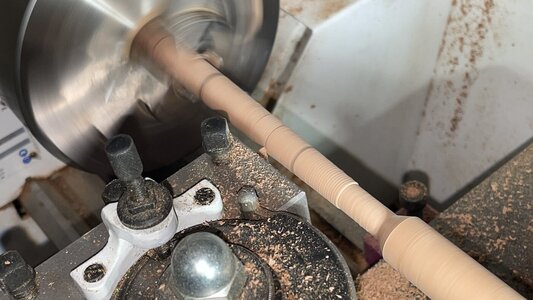
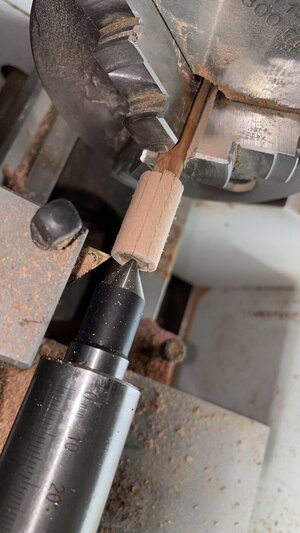
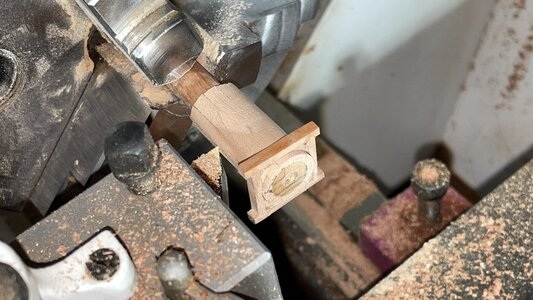
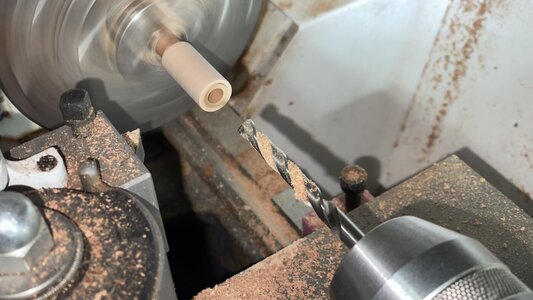
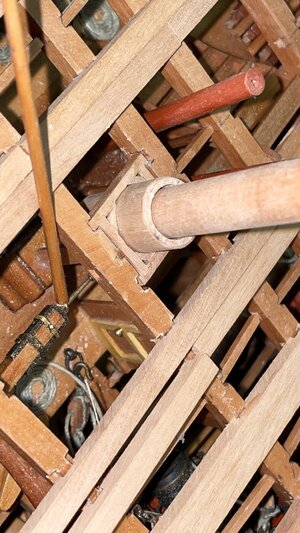
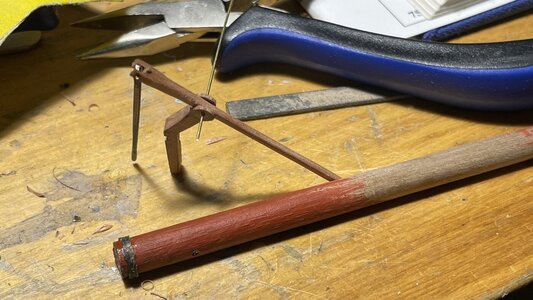
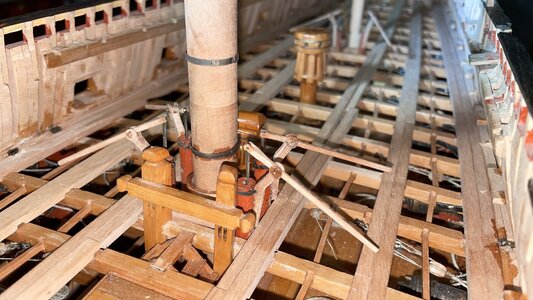
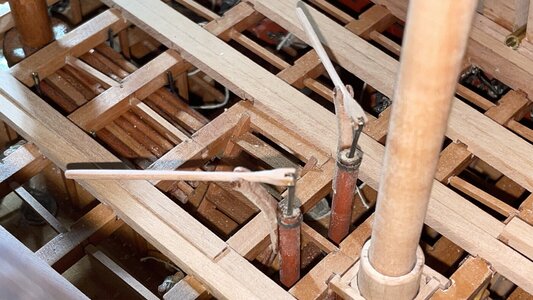
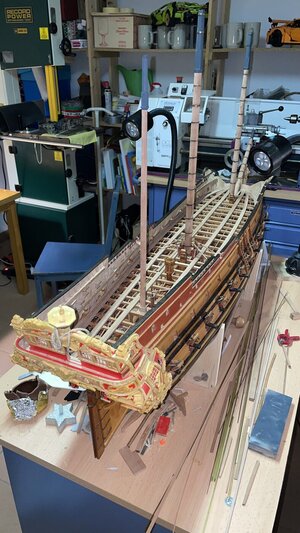
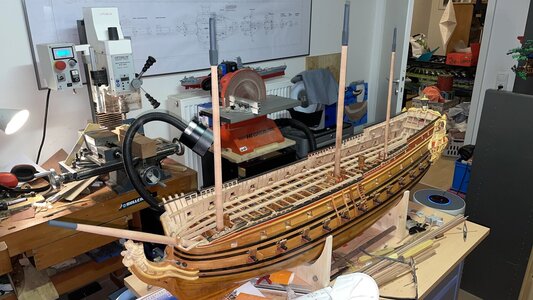
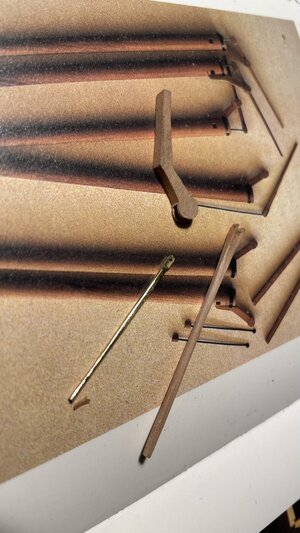

















- Joined
- Apr 20, 2020
- Messages
- 6,202
- Points
- 738

Dear JoachimIn order to be able to close the 2nd cannon deck on the port side and in the middle of the deck, the lower masts must sit properly straight. Same for the pumps and other machines, other accessories that go through multiple decks. Therefore, I properly shaped the lower mast trees on the lathe: The tapering upwards is achieved by turning many individual cones on the lathe. The square sections were created on the milling machine. Then I built the mechanism of the pumps with lever, pump rod, etc.
you are doing wonderful work on the lower mast trees on the lathe and with the pumps. well done

Many Thanks for sharing with us the different working steps - very good work.
BTW: you have some very good equipment in your workshop. we can see hegner disk sander (I have also one) and the optimum mills -> are you happy with the quality of the machines?
BTW: you have some very good equipment in your workshop. we can see hegner disk sander (I have also one) and the optimum mills -> are you happy with the quality of the machines?
- Joined
- Oct 31, 2019
- Messages
- 229
- Points
- 298

Yes I use some machines from Hegner ans Optimum and all work very exactly and without problems. They are heavy and that’s good.
Now I'm going to build everything that's in the middle of the second gun deck . This also includes the gratings. I saw 9mm thick blocks of wood for each hatch. Longitudinal grooves are milled 5 mm deep with a 1.5 milling cutter in distances of 1.5 mm. Then I mill 4mm deep transverse grooves. After each transverse groove, before the next milling, I insert a 1.5 mm thick strip into the block. Only then I can mill the next transverse groove without that the thin grids are breaking out in the block during milling. Then the surface of the grid is sanded slightly round on the disc sander.
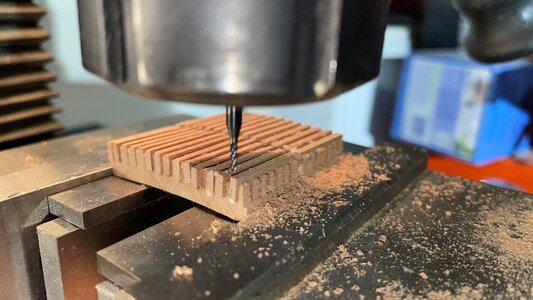
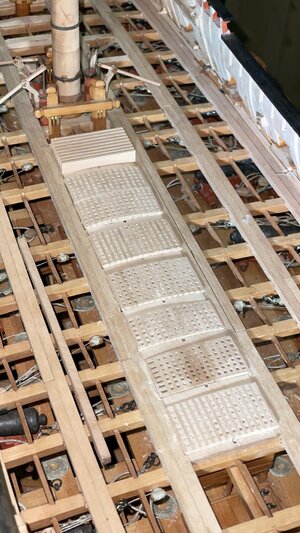
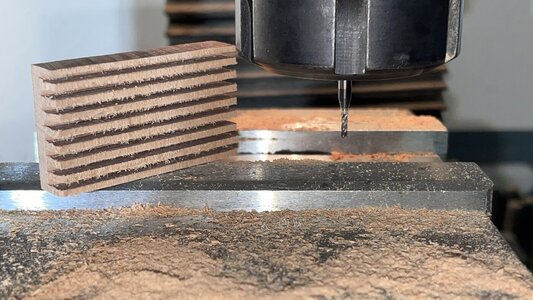
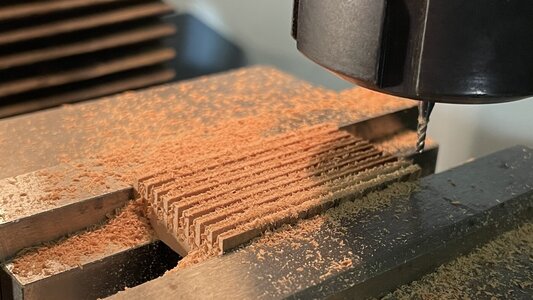
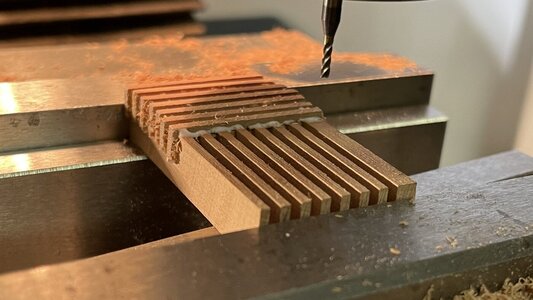
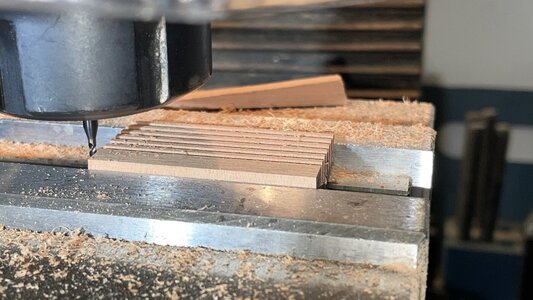
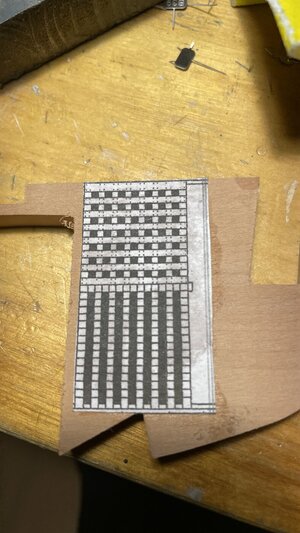
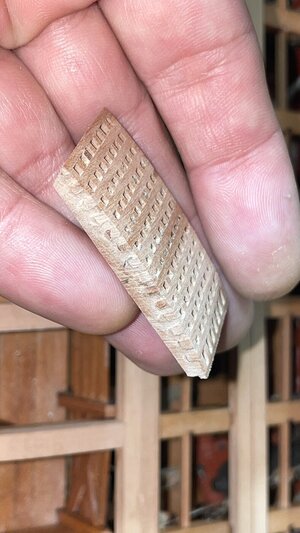
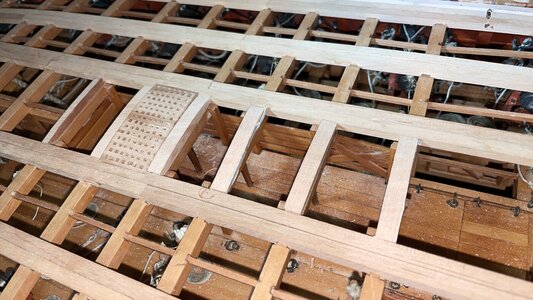
Now I'm going to build everything that's in the middle of the second gun deck . This also includes the gratings. I saw 9mm thick blocks of wood for each hatch. Longitudinal grooves are milled 5 mm deep with a 1.5 milling cutter in distances of 1.5 mm. Then I mill 4mm deep transverse grooves. After each transverse groove, before the next milling, I insert a 1.5 mm thick strip into the block. Only then I can mill the next transverse groove without that the thin grids are breaking out in the block during milling. Then the surface of the grid is sanded slightly round on the disc sander.









- Joined
- Oct 31, 2019
- Messages
- 229
- Points
- 298

The rudder stock got its joint in the second gun deck. I turned the round joint on the lathe from a square rod. If the wooden stick is 3mm thick, you have to remove even more thickness with files while the machine is rotating. With the normal cutting blades of the lathe, the wood will break if the thickness is less than 3 mm. I've already created a winch on the bow, I don't know the exact name right now.
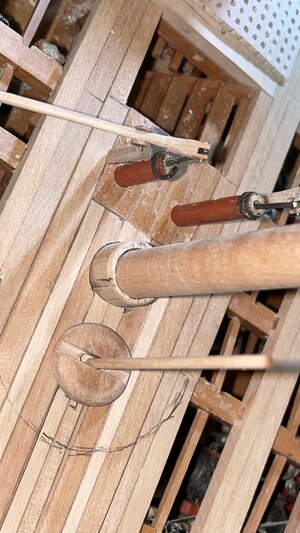
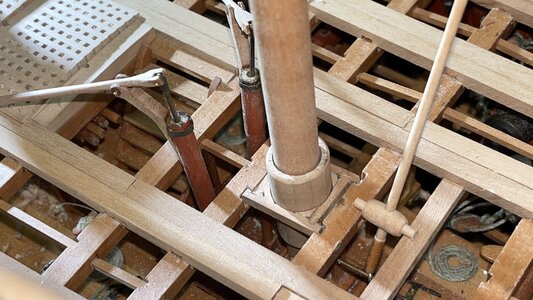
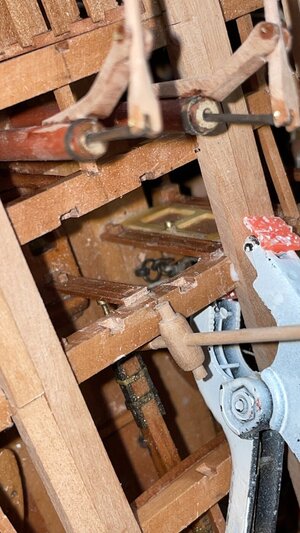
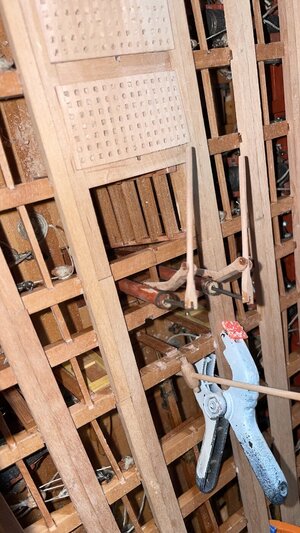
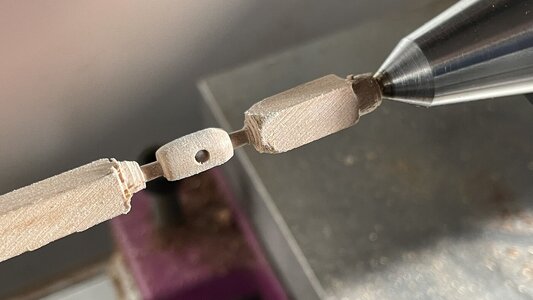
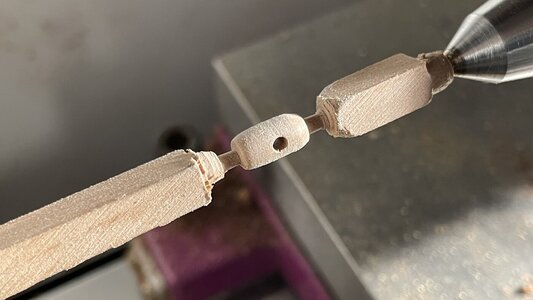
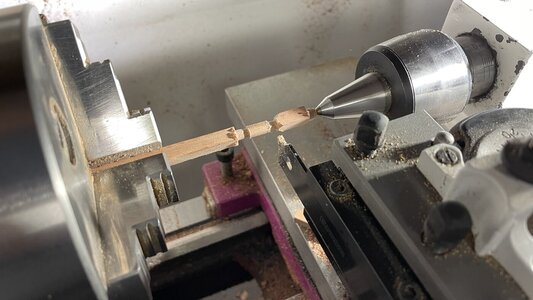
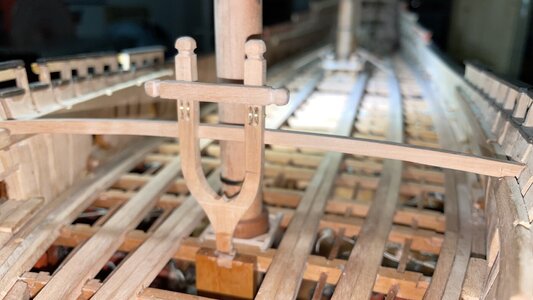
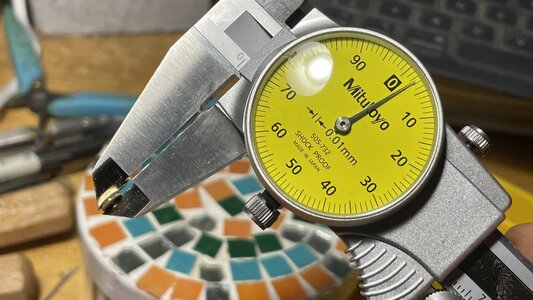
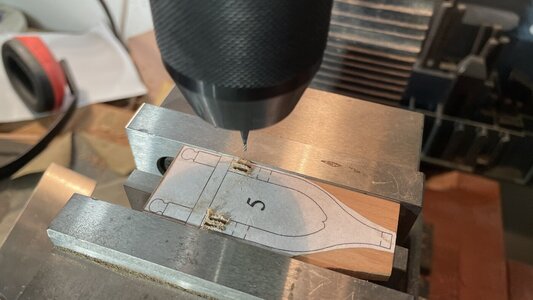










Joachim, very nice and precise work! (German precysity?) If you want to go even further with details, remember, that the tiller was sliding up and down in that oval piece of timber (kolder?) and not fixed. Otherwise the range of the rudder movement would have been very limited (+-5 deg or even less)
No criticism, just my 2 cents...
János
No criticism, just my 2 cents...
János
Hello Joachim, your work is really impressive.
- Joined
- Oct 17, 2020
- Messages
- 1,690
- Points
- 488

Good morning, Giocchino, I ask the pissers in the gunboats I don't see them, why, on your work, I like it very muchIn order to be able to close the 2nd cannon deck on the port side and in the middle of the deck, the lower masts must sit properly straight. Same for the pumps and other machines, other accessories that go through multiple decks. Therefore, I properly shaped the lower mast trees on the lathe: The tapering upwards is achieved by turning many individual cones on the lathe. The square sections were created on the milling machine. Then I built the mechanism of the pumps with lever, pump rod, etc.
View attachment 280181View attachment 280182View attachment 280183View attachment 280184View attachment 280185View attachment 280186View attachment 280187View attachment 280188View attachment 280189View attachment 280190View attachment 280191View attachment 280192View attachment 280193View attachment 280194View attachment 280195View attachment 280196View attachment 280197
